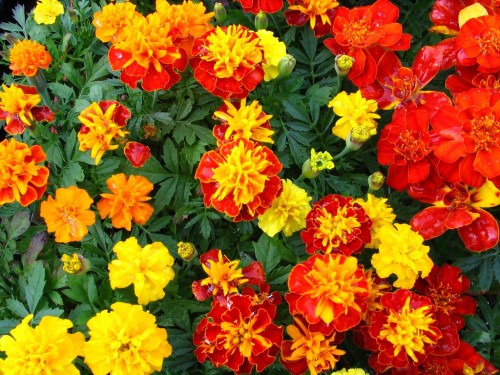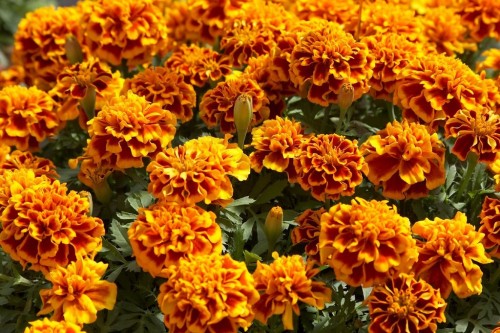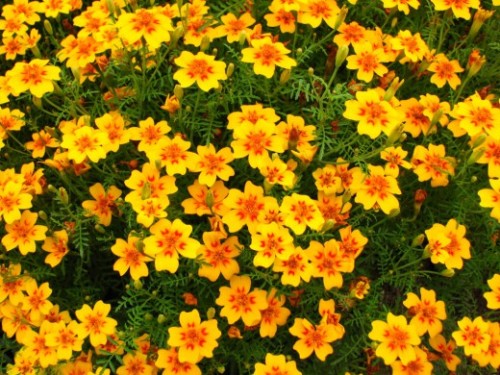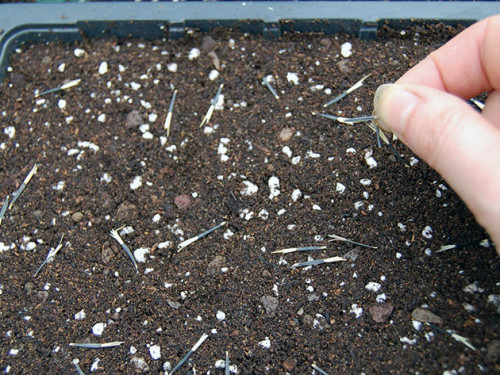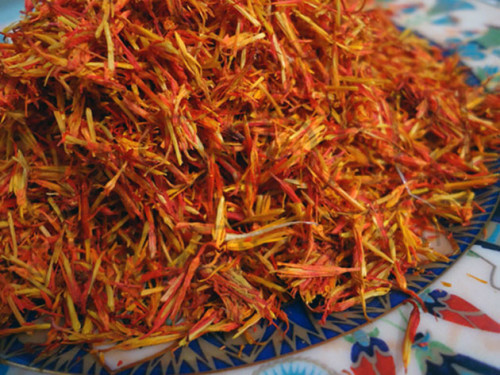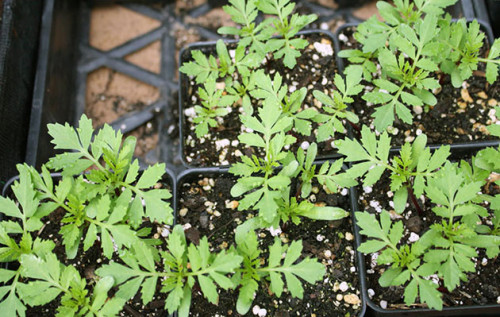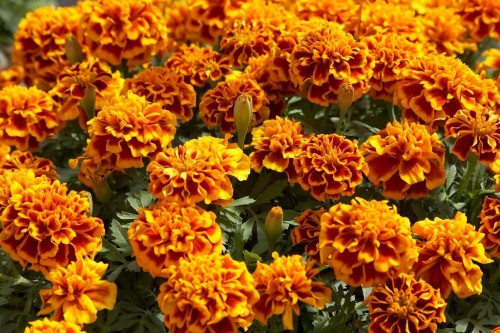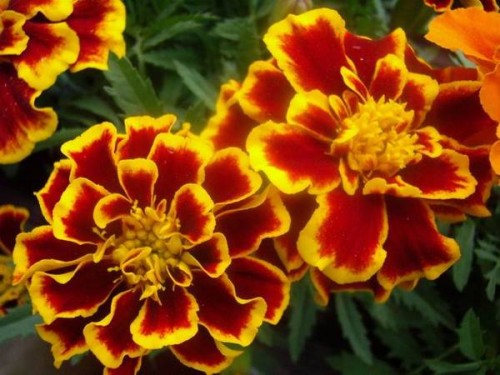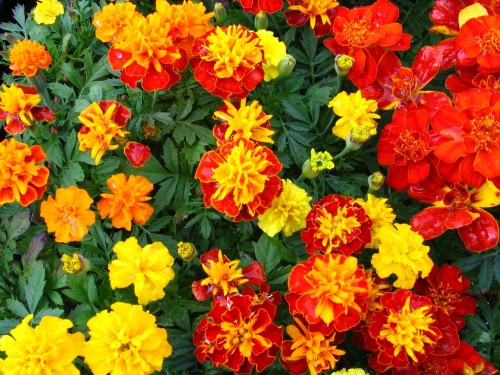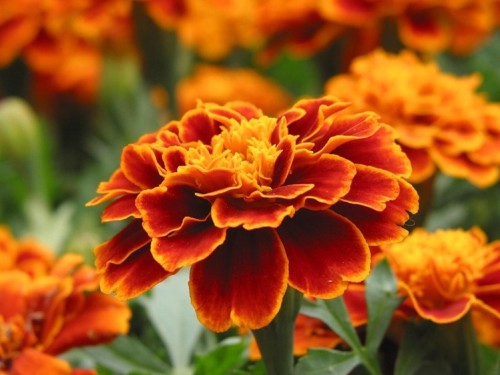Velhets can be found in many gardens. They received popularity in our country, even though their real homeland is America. These flowers are appreciated for their unpretentiousness and ease of cultivation. Next, consider how velvets are grown from seeds.
Content
Types of velvetsev
To date, more than 65 types of velvetsev are already known. But we are mostly grown only three - this is:
- rejected
- reprehension
- tricarous.
- Barchatts rejected. These are annual plants with straight branched stems. Their leaves, designed with each other, have a pointed form. Blossoms usually begins in the second half of June. Inflores heads have an average value and arranged on thick legs.
- Very vertices. Annual plant growing in the form of a compact or stray bush. Branchy stems can grow up to 1.1 m. They are located large inflorescences, the diameter of which can reach up to 120 mm. Inflorescences usually have a yellow monophonic shade. Blossom starts mainly in the second half of summer.
- Velchattsi thincase. Annual plant. Grows in the form of a bush. Height reaches 25-35 cm.
Velhets: landing and care
Rules landing
For sowing, seeds usually make a wide well in the ground. Between the landing pits there should be a distance of about 15 mm. If you put the thicker, the sprouts can stretch out and burn. In addition, it is recommended from top to sprinkle with a thin layer of land, then pouring. Before the appearance of sprouts, water should be moderately. The sprouts themselves will not make themselves waiting. When a pair of leaves will be crushed at seedlings, it can be resettled at a permanent place.
It follows shameless - no more than 20 mm. Purchased marriage seeds, in fact, will be needed only for the first seedlings, and in the future, you can collect them already from the plants that beat. On drying a bush should leave several flowers that need to be finally started. The most important thing is that until the moment of complete drying did not go rains. Then you can easily easily get the seeds from a cup of flower, which will then need to dry and save to the end of spring.
If there is a desire, you can sow velvets to seedlings even early in spring. Seedlings are best kept until the end of spring in a warm bright place. At the beginning of summer, the seedlings are taken out about a week to open air so that they can get used to future climatic conditions. After that, you can land them already at your permanent place.
For velvets, it is advisable to prepare the following soil composition - 1 pieces of the turf, humidia, peat and 0.5 parts of the sand. To prevent the occurrence of such an unpleasant disease as the "black leg", which occurs often due to water stagnation, plants require high-quality drainage. It can be made of rubble, crumples and sand. Before planting seedlings into the soil, it is advisable to make prepared fertilizers, with the exception of fresh manure. If there is a probability of frosts, then seedlings should be covered with a film.
Velhets grow pretty quickly. The first colors may appear in a couple of months. At the same time, they are rather cold-resistant and unpretentious plants. Saplings can germinate well after planning at a permanent place. They are usually planted in an open soil, boxes on the balcony or pots. Shelters, gauze, films and other protection of vertices of velvetsev are not required.
When to sow veciatts? So, it is possible to plant them at a permanent place only when it is confidence that freezes will not return, and a stable temperature will be installed at the level above +6 degrees. For this reason, when choosing a time to plant vertices, first of all, it is necessary to take into account the current weather. If you live in fairly warm regions, you can already plant flowers in April, it is desirable to do it in the middle lane only in the beginning of May. If the velvets are squeezed into the ground, then flowering begins only in the second half of summer.
So that the flowers appear faster, it is recommended to first grow velvets from seeds at home. Then, at the occurrence of heat, it will be possible to land in the open soil already formed plants, not seeds. Thanks to this, bloom will not make himself wait long.
Velhets: care
These flowers can fully successfully grow in the shade and half, but still best feel in sunny places. The main condition is a sufficient amount of light and a normal level of humidity. The velvets poorly tolerate excess moisture. While the seeds did not sprout, it is desirable to keep seedlings at a temperature of at least 23 degrees. Flowers are required in any case to protect from cold wind.
For the successful cultivation of the velvetsev, a well-moistened soil is necessary, especially in the period of growth. But it is impossible to overdo it. The most unpretentious is the colors of the varieties are rejected, which can take root in any soil. These velvets can bloom, even if not to make fertilizers. As for feeding, it should be fertilized at no more than once a month. Otherwise, shoots will grow, and it will not bloom soon. During the growth period, it is possible to water moderately.
When growth stops, it watered better to suspend, in order to avoid moisture stagnation. By the way, the moisture stagnation can lead to various diseases, rotting and stopping flowering. In the summer, when it is very hot, it is desirable to produce watering in the cool time of the day, i.e. in the evenings.
These flowers are able to live without fertilizers, but will grow much weaker. The feeder should be made three times. The first time fertilizers are added to the soil when the seedlings will grow to 9 cm. The second feeding is carried out when the first buds appears, and the third is to the beginning of flowering. Sometimes used for feeding not only organic, but also complex fertilizers.
Care for the velvets provides periodic loosening of the soil and weeping. The fact is that these flowers love fresh air and loose ground. In summer, in order to better formed lush bushes, it is recommended to do pruning. If you delete the inflorescences that managed to blow away, they will bloom stronger. In autumn, when the flowers are covered and dried, they should be removed from the bed.
It must be said that these flowers can successfully grow even in the usual pot. To do this, it is best to plant them in the fall so that the bush to bloom to spring to spring. Water seedlings that are planted in pots, best daily. When it is hot, it is desirable to spend watering twice a day - in the morning and in the evening. The velvets are quite resistant to drought, but if they feel the critical lack of moisture, the lower shoots will yellow and dried, which will affect the appearance of plants. And the appearance for this flower, as for all decorative crops, is very important.
The place where the velets are planted, should be quite illuminated. Best seedlings will feel in balconies overlooking the south, East or West. But this does not exclude the opportunity to grow them on the northern shadowed logs. But in this case, the flowers will bloom weaker. In August, flowering may stop at all.
Growing velvetsev: possible problems
With the cultivation of velvets, some recommendations should be taken into account, the non-compliance with which can lead to problems:
- For example, moisture deficiency affects the growth of plants. It also affects the amount of inflorescences.
- If the soil is rejected for a long time, it can lead to the death of plants. The reason for this is the defeat of the roots of the velvetsemi mushroom diseases.
- In some regions, periods of long rains are possible. In such conditions, inflorescences may begin to heat up, which in particular concerns large instances. In order not to rot all the plant, such inflorescences should be deleted as quickly as possible.
- It is also worth considering that when the air temperature drops to +9 degrees and below, then the leaves of the plant become reddish. This slows down the development and growth process.
- Excess moisture, making organic fertilizers in springtime and high temperatures - lead to the fact that the plants grow more than usual. This negatively affects the formation of inflorescences.
It cannot be said that the rules of growing velvetsev are very different from the recommendations of care for other decorative colors. But still this plant is more unpretentious than other floral cultures. That is why the velets are so popular. In addition, grow them easy. The main thing is to comply with the rules described above.
Fighting diseases and pests
The velvets have a specific fragrant fragrance, which is highlighted by the root system into the soil. This is, in fact, is the protection of these colors from various fungal diseases. Moreover, this fragrance protects not only the plant itself, but also those that grow nearby. That is why there is a recommendation to plant velvets as the framing of the entire garden plot. By the way, the chamber is possessed similar properties.
The velets will be healthy only if they carefully care for them. If they have lack of moisture, then in such conditions there may be a web tick. With a wet moisture, fungal diseases and rotes occur. To get rid of the plant tick, water is poured and sprayed with special means. Spores of fungi and rot is treated primarily by drying and heat.
If slugs and snails appear, then it is advisable to not use poisonous spraying against them due to the fact that they can harm colors. The velvets still under certain conditions are susceptible to gray rot. This disease most often occurs in conditions of too thick landing, when the low temperature, humidity and dampness are still present. Signs of gray rot is the appearance of bright brown wet spots on the leaves and stems of bright brown wet spots. If the plants were amazed by this ailment, they should be destroyed as quickly as possible so that they do not have time to infect healthy shoots that grow nearby. It should be noted that when instilled in compost of the freezers of velvetsev, midges and other pests will not be able to start.
Velhets: Photo.


